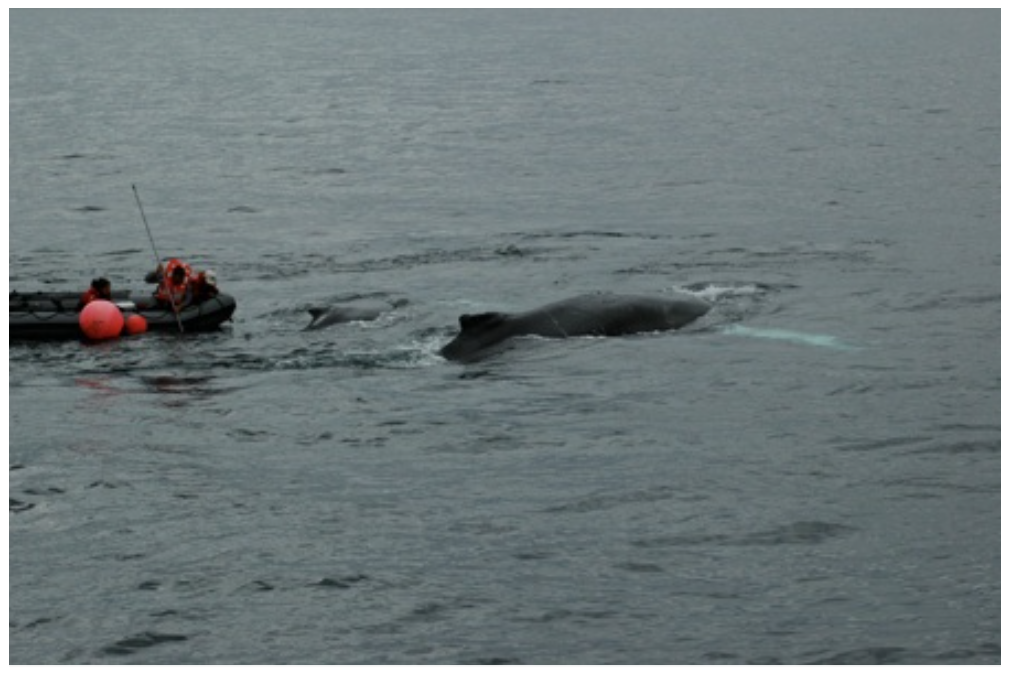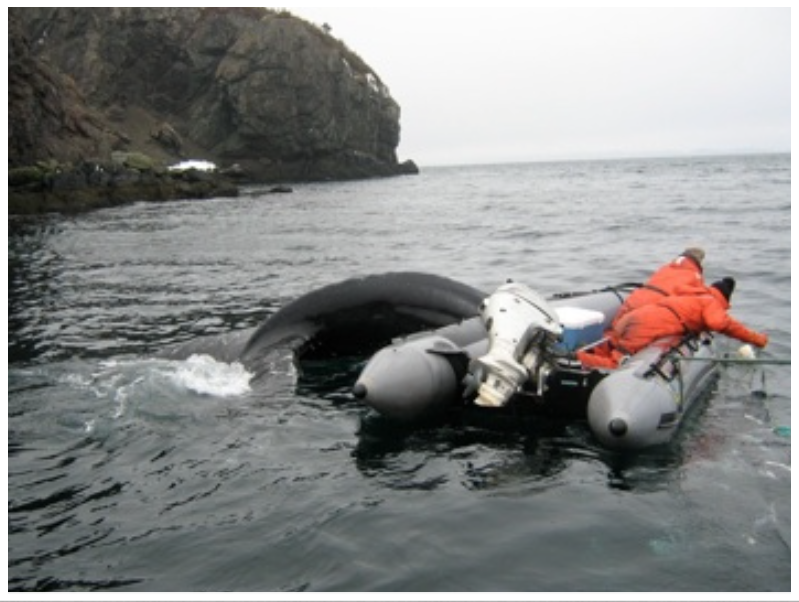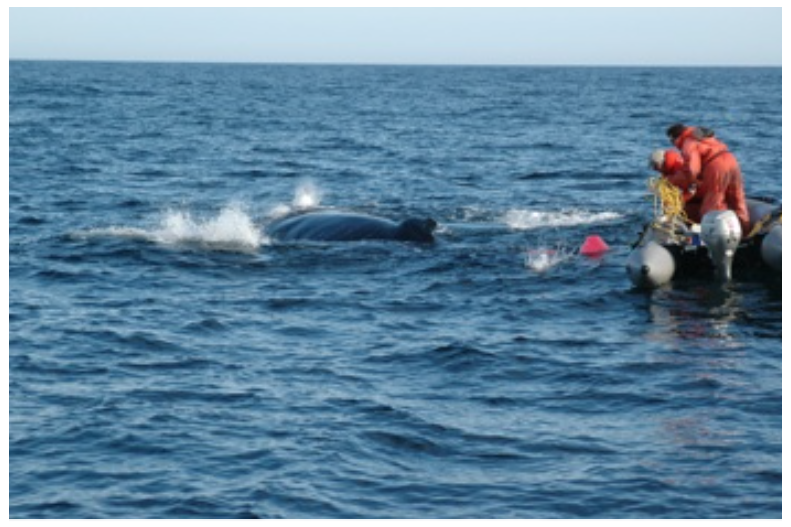Wayne Ledwell, of Whale Release and Strandings, releases a humpback whale from fishing gear.
Bay de Verde (2008)
For the past three decades, entanglements of large whales in commercial fisheries have been recorded along the coast of Newfoundland and Labrador, Canada, as part of a program intended to release captured animals and reduce costs to fishers.
Between 1979 and 2008, 1,209 large whale entanglements were recorded in Newfoundland and Labrador waters. Species included humpback whales (Megaptera novaeangliae; 80%) and minke whales (Balaenoptera acutorostrata; 15%), with other species being reported very occasionally. Approximately 4% of entanglements could not be identified to species, particularly when whales were spotted at sea towing fishing gear.
Gear (such as the snow crab rope in the photograph at right) is often retrieved from whale entanglements. Often floats, crab pots, gillnets or anchors will also be attached to the rope.
First encounters with gear-entangled whales often look like the photograph at right. Closer examination almost always uncovers a more severe entanglement. Whales are commonly caught through the mouth and around the tail stock, fins or both. There is often a large mass of unseen gear underneath the whale.
Humpback entangled in gear, South East Bight, 2008
Releasing Minke Whale from gear, Wild Bight, 2007
Minke whales are the second most common large whale entangled in fishing gear in our waters. Although smaller than humpbacks they are still a large, wild ensnared animal and great caution must be exercised in making sure the animal is released gear-free. As in most entanglements of large whales, the majority are entangled through the mouth and around the tail and or fins at the same time.
Situations where a calf is entangled in gear with the cow attending it are difficult and potentially dangerous. Disentangling the calf requires a great deal of patience and skill.
Releasing a humpback calf from snow crab gear, 2008
Photo credit: Len Picco


















